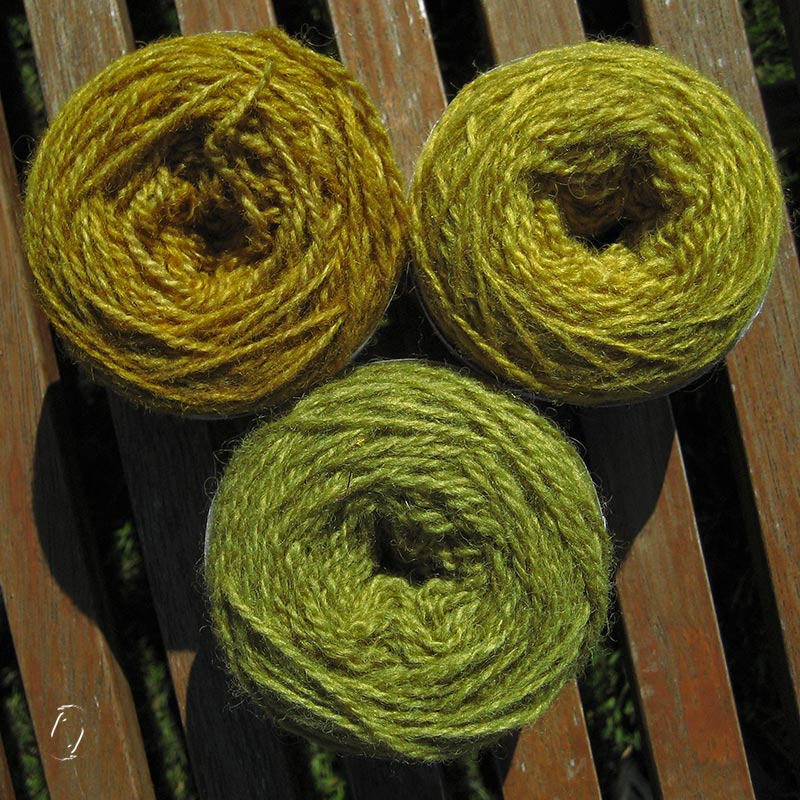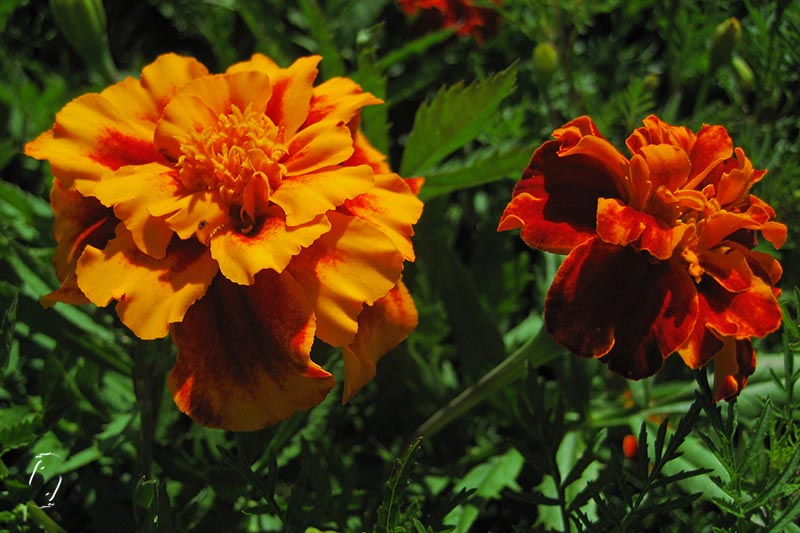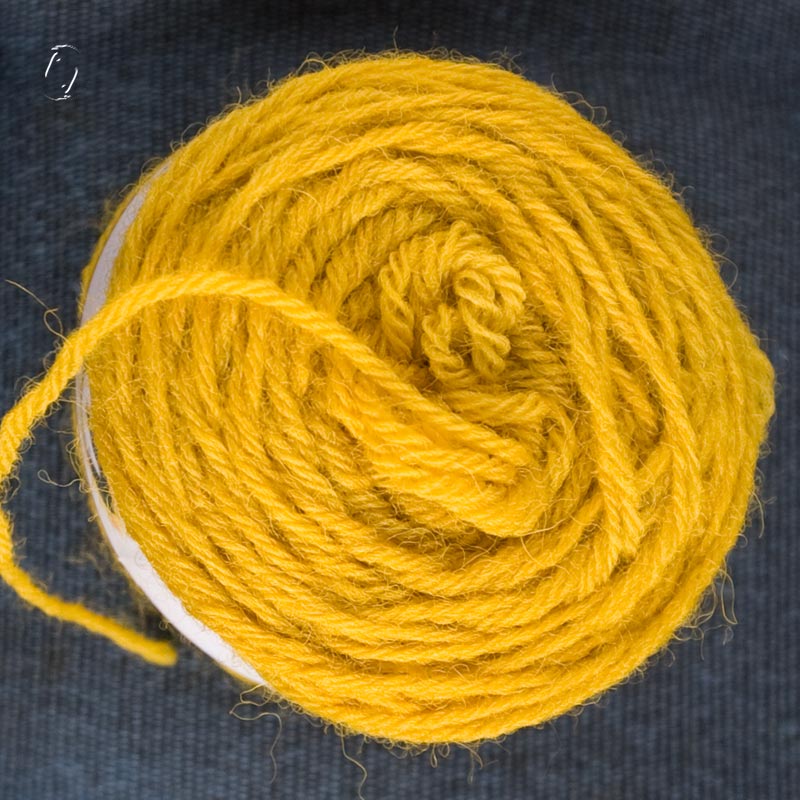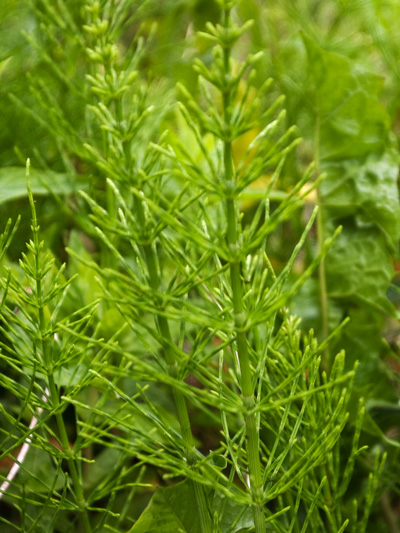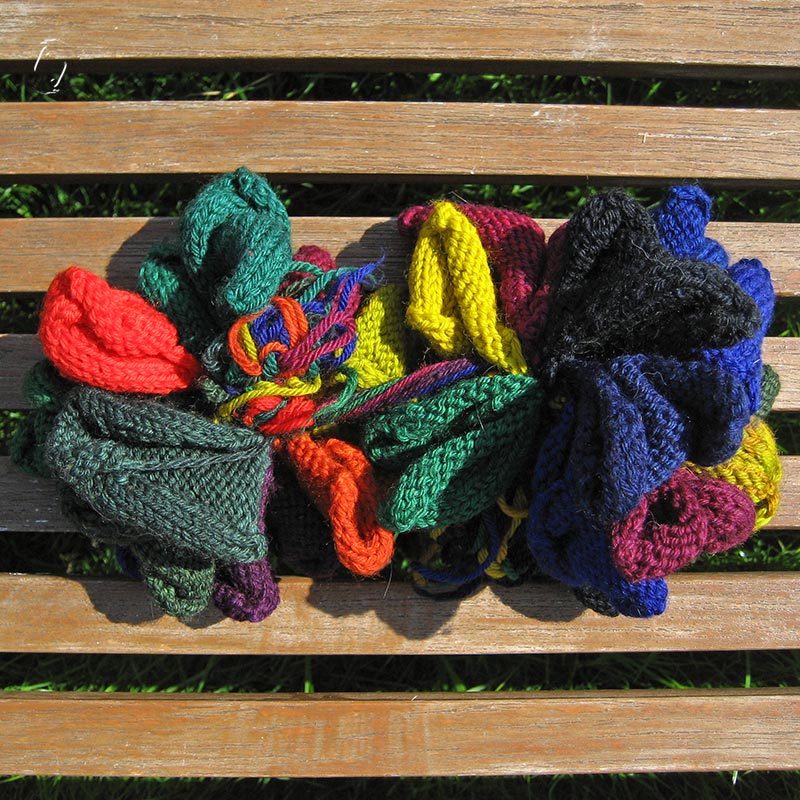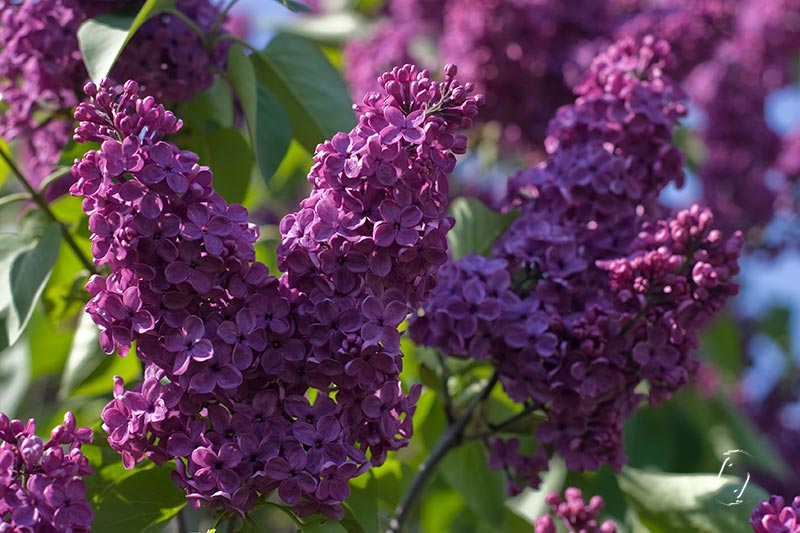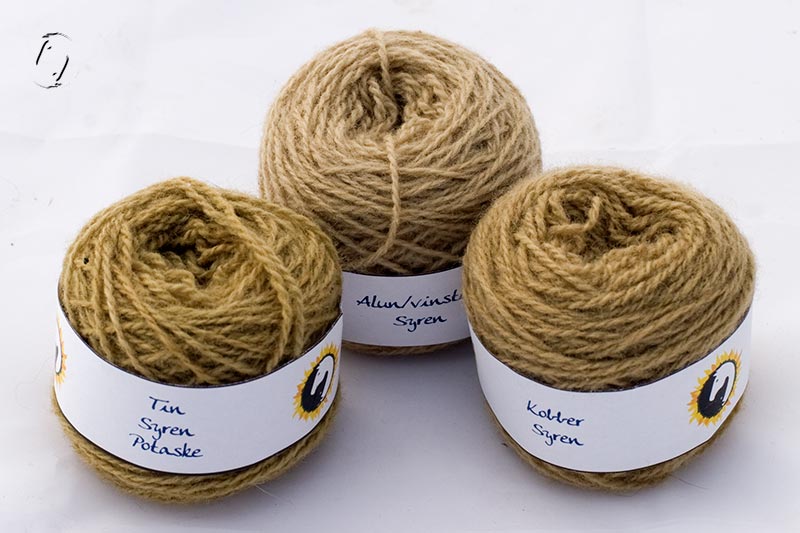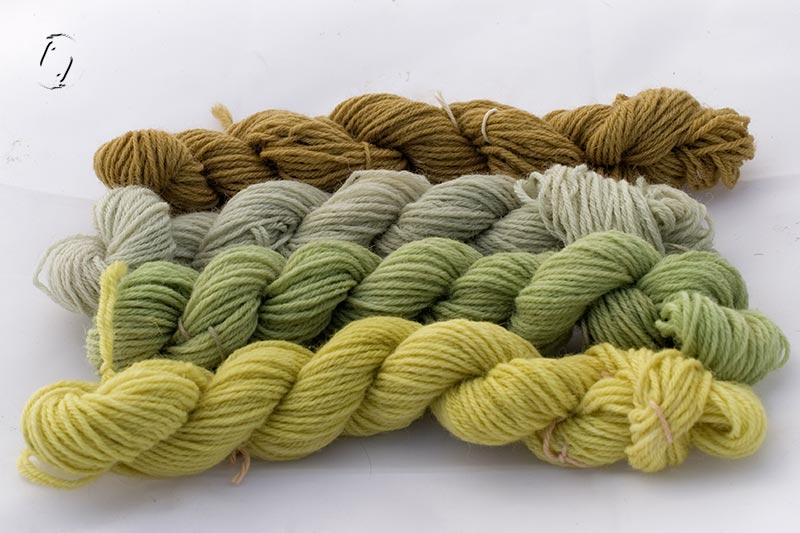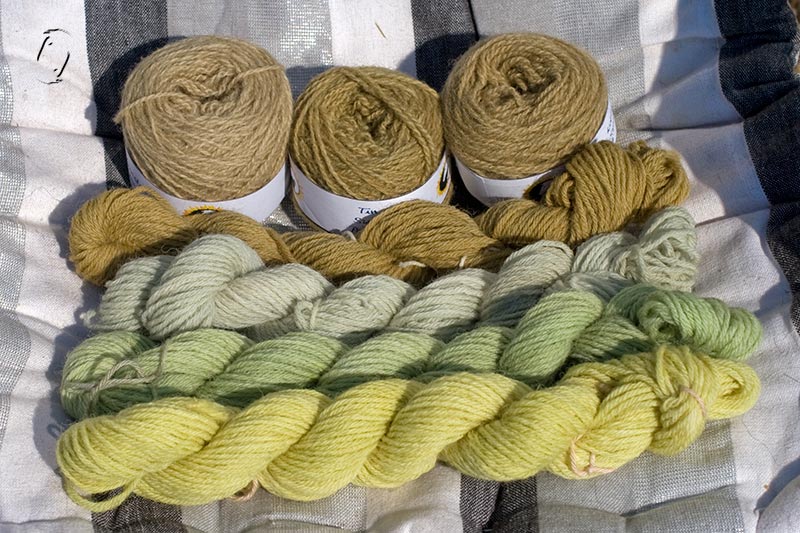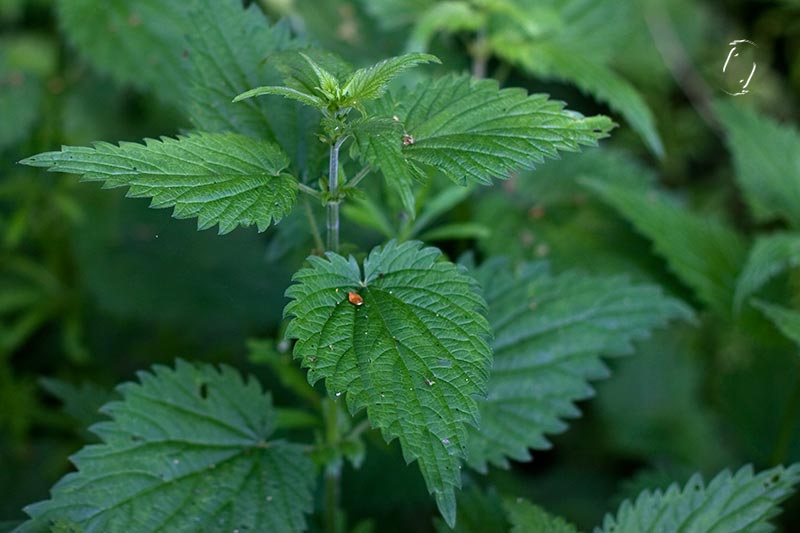
Having been taunted by the lovely greens on other peoples’ yarns, I decided to do this at least once, even though I’ve always thought it would just give a pale yellow.
I first used the method described by Jenny Dean, where you chop up the plant tops, pour boiling water on them, steep for a day, then boil as usual. I recommend using sturdy garden gloves while chopping, unless you need a new pair of rubber gloves anyway. (I don’t know why this came as a surprise, as I frequently draw blood when making salads. What does baffle me however is the fact that my left thumb is still the same size and shape!)
I started off with 350 g of plant to 25 g of yarn, because that’s what I’d picked. Dean’s recipe says 1:1, but MotherOwl suggested at least 8:1 which was good advice. Anyway, simmering/boiling the yarn didn’t give me much of interest. So I decided to keep it under 60° C and that made the green much more vibrant. So I ended up doing an unmordanted skein for a paler colour, one to modify with iron and one cotton, as it apparently can give dark green with iron. It did, but then rinsed out to a dark grey-brown. Could be the tannin mordant, could be that Jenny Dean doesn’t rinse her yarn, but since iron makes it brittle, I always do.
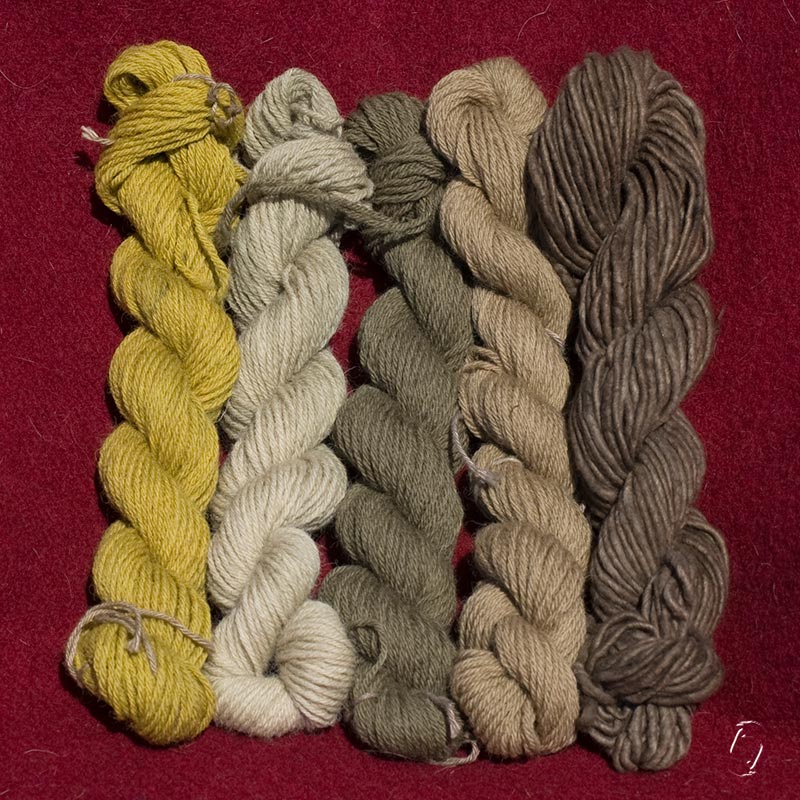
For some reason, the alum mordanted skein doesn’t show correctly with the others, so here’s one of it on its own which I think is more true.

Brændenælder
Jeg havde egentlig diskvalificeret nælder som farveplante, fordi jeg forestillede mig at den bare giver en fesen lysegul. Men der er nogen som fremviser grøn, så jeg måtte alligevel prøve. Jenny Dean skriver bl.a. at det med jern giver mørkegrøn på bomuld.
Først brugte jeg Deans metode hvor man hakker bladene, hælder kogende vand pÃ¥ og lader stÃ¥ til dagen efter, hvorefter man koger, farver osv. som “normalt”. Jeg anbefaler at bruge havehandsker nÃ¥r man hakker, med mindre man alligevel trænger til nye gummihandsker. Jeg ved ikke hvorfor det overraskede mig, for jeg har ofte blod i mine salater. Til gengæld er det forbløffende at min venstre tommelfinger stadig har sin oprindelige facon!
Den normale metode med kogning gav en kedelig khakigrøn, sÃ¥ jeg besluttede at forsøge med en lavere temperatur og bruge bladene med det samme – sÃ¥ et kort bad pÃ¥ 60° og sÃ¥ et par stykker i jernbad bagefter. Og det blev en hel del bedre! Bomuldsfeddet blev dog grÃ¥t efter skyl, mÃ¥ske pga bejsning med garvesyre, mÃ¥ske fordi Dean ikke vasker sit garn bagefter, men eftersom jern mørner garnet foretrækker jeg at gøre det.
Efter råd fra Uglemor brugte jeg omkring 10:1 plante:garn istedet for det gængse forhold 1:1, og det må siges at være vejen frem. Ellers er jeg ret sikker på, at garnet rent faktisk var blevet fesengult!
